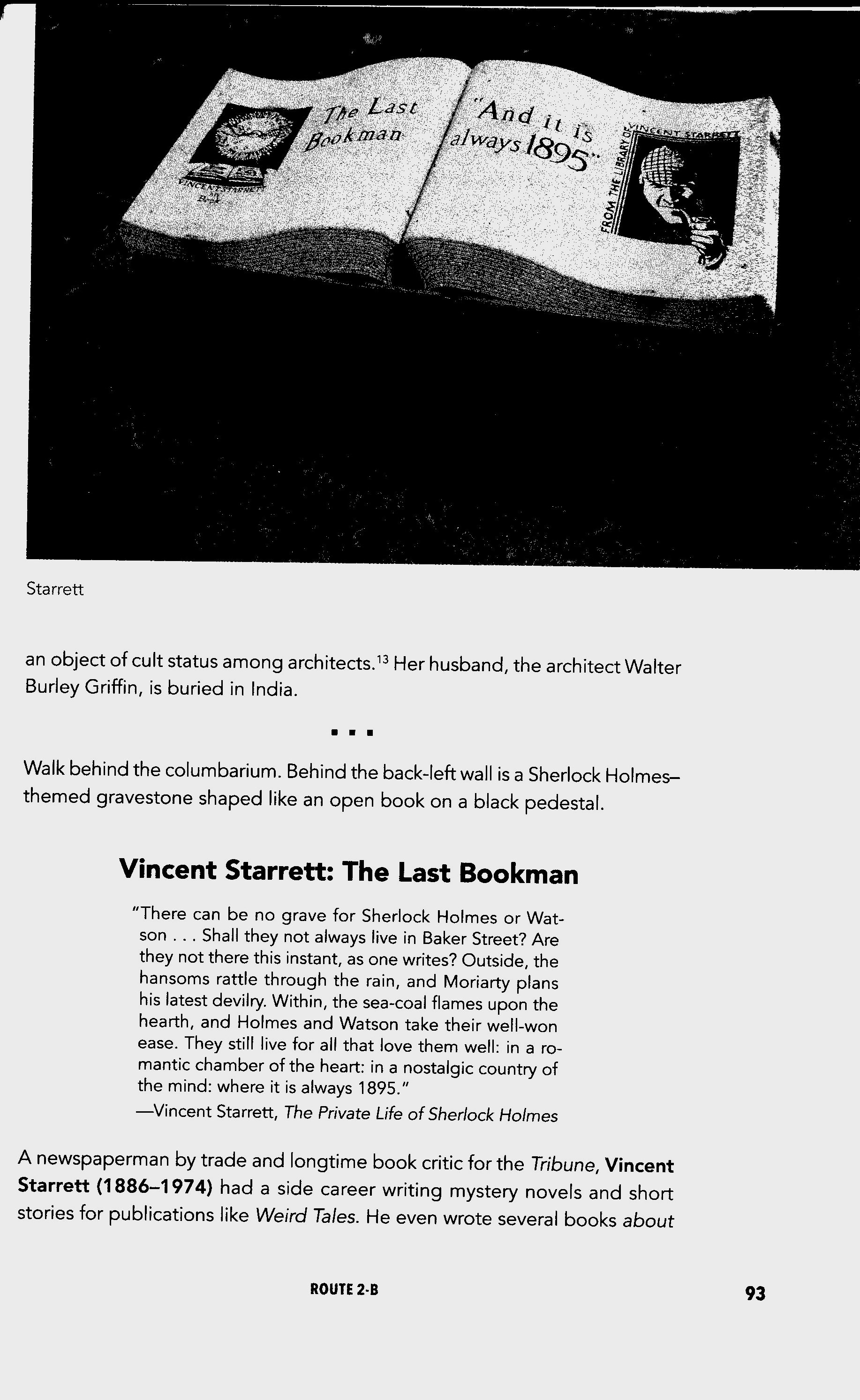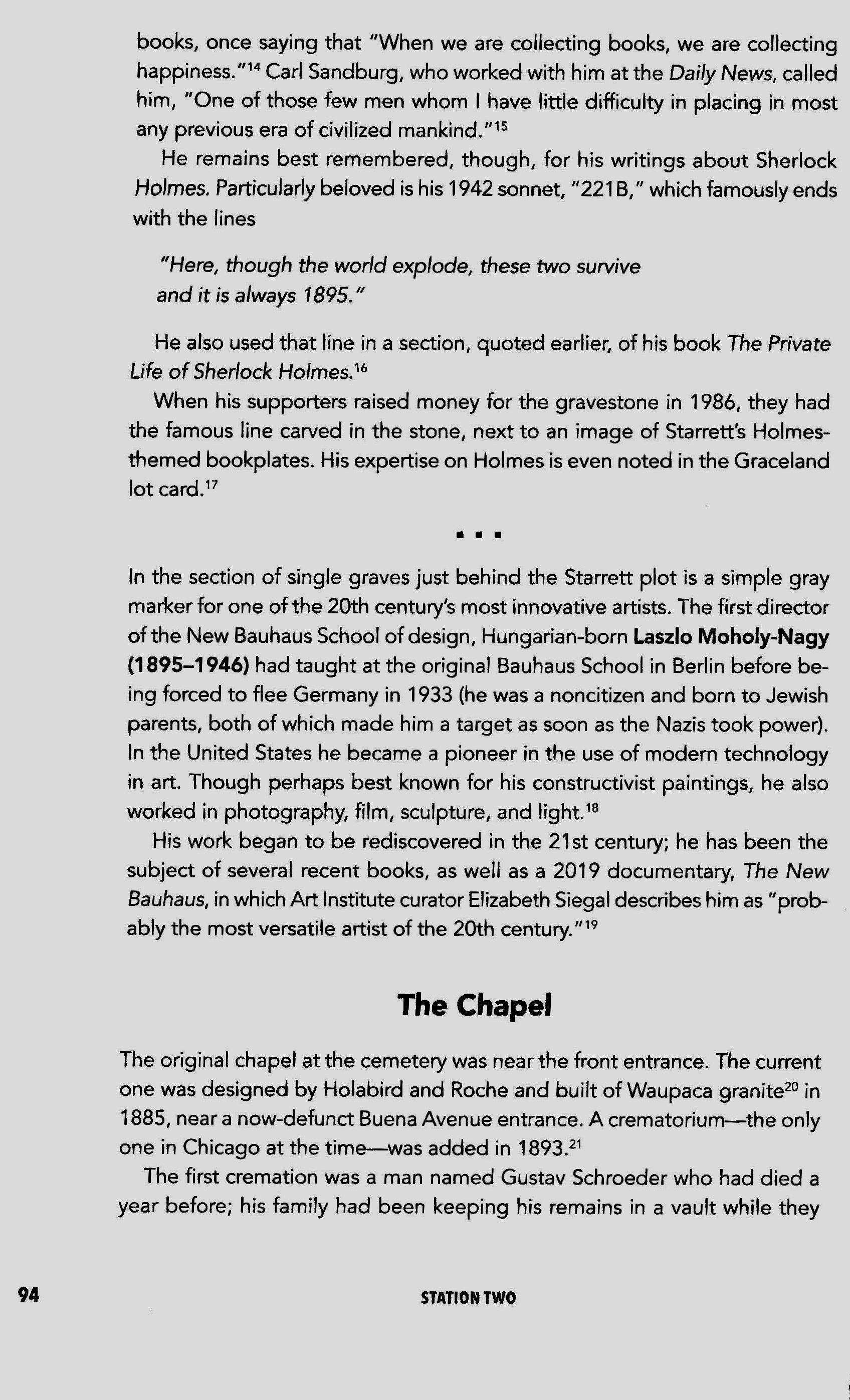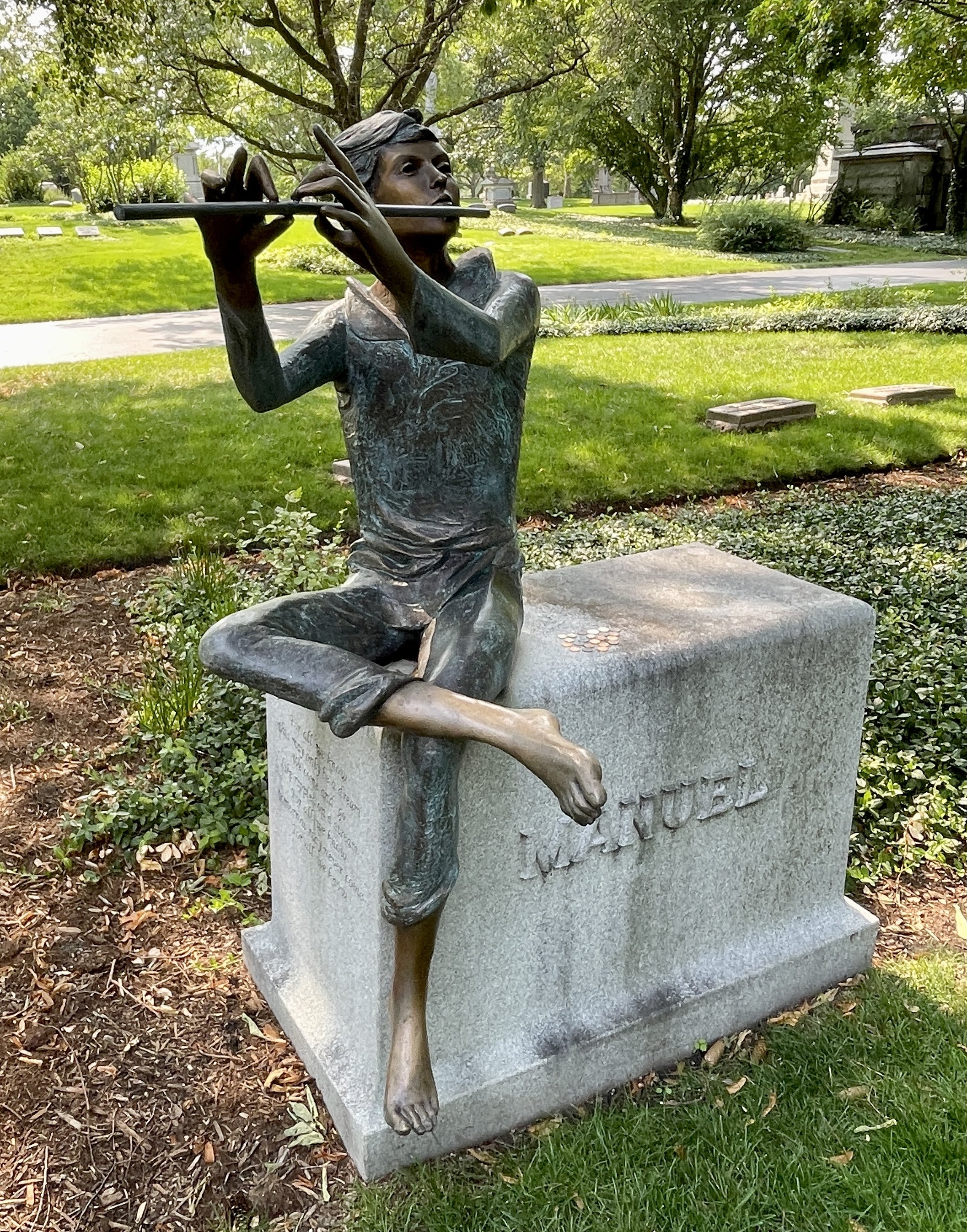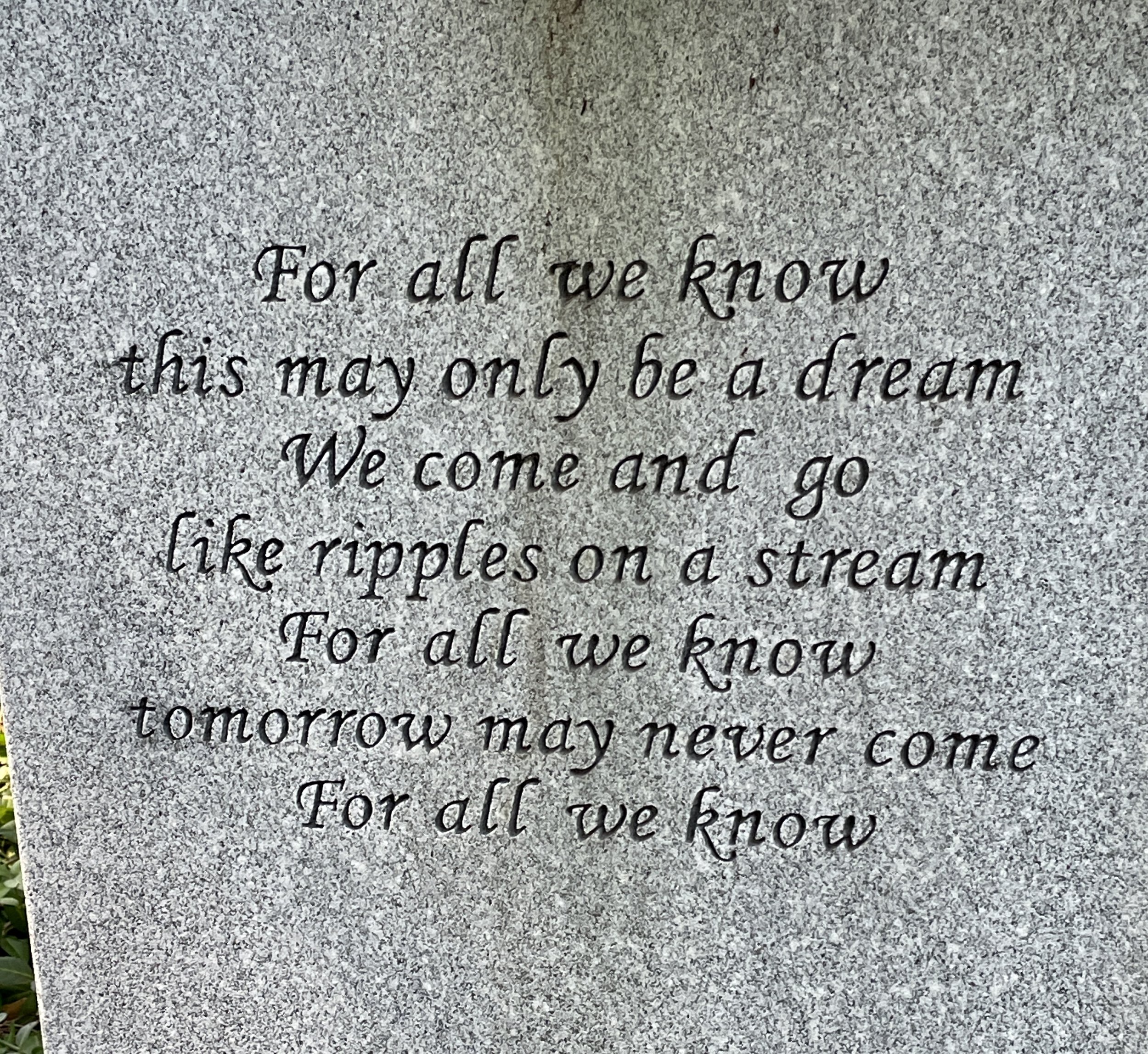Going Back to Graceland
This is “Sue,” the famous T. rex and the most popular exhibit at Chicago’s Field Museum. She was named for Sue Hendrickson, who discovered the dinosaur in 1990.
While taking a swing through the Mid-West this summer, we stopped for a few days in Chicago and played tourist. We checked out the new home of Sue, the Field Museum’s famed T. Rex, stuffed ourselves on deep dish pizza, and enjoyed the breezes that came off Lake Michigan.
I occasionally looked around to wonder if Starrett would recognize his adopted city. Much has changed since he died nearly 50 years ago.
Used and rare bookshops can be found, but they are fewer than ever. The El runs as noisily as ever around the city and—based on the expensive clothing of those wandering in and out of its stores—North Michigan Avenue remains the Magnificent Mile of merchandise. The Chicago Tribune still exists, but like most daily newspapers, it is a ghost of its former self.
The deep dish with green peppers and mushrooms.
And if Chicago no longer threatens to overtake New York as the nation’s literary capital, it is true that the old city canters along at a swift pace with its head high and chin out. It felt good to be back.
For me, no trip to Chicago would be complete without a pilgrimage back to Vincent Starrett’s burial place. My only other trip there was in 2017. It was time to go to Graceland again.
A portion of the Graceland Cemetery map. The map and guide were created by Jake Coolidge and Joe Collier. I’ve added the Starrett Grave designation.
The first surprise came when we drove up to the entrance, only to discover that the gates were locked. Not only did I forget to bring Don Izban’s guide to Graceland, I had also failed to check out the Graceland Cemetery website beforehand. As a result, I was ignorant of the plans to renovate the visitor’s center and the roads surrounding it, necessitating that the main gates be locked.
I drove down North Clark Street along the cemetery’s brick wall and sure enough, there was a new entrance that placed us on Greenwood Avenue.
If you see this fountain, pull over and park. You’re almost at Starrett’s grave.
For anyone else going there soon, the best way to find Starrett’s grave is to stay on Greenwood Avenue and pull over when you reach the Horatio N. May Chapel on your right.
A little fountain and commemorative brick circle has been built to the left of the chapel.
The Starrett headstone is next to a large tree. The red circle does not exist IRL, so don’t look for it.
Go up to the top of the wall surrounding the fountain and look left.
You’ll see a large tree a few dozen steps away. Next to it is the back of Starrrett’s distinctive headstone.
Even with all these hints, finding the grave might be a little tough. The Graceland website will give you details you can use with your GPS. You’ll be told that Starrett is buried in Section C; Lot 903; Grave 4.
Using this information will ease the trip along the winding and confusing narrow roads of the cemetery.
Starrett’s headstone is distinctive, but like all things, had weathered when I saw it in 2017. Several years ago, a small number of Sherlockians from Chicago and beyond raised sufficient funds to refurbish the headstone. It has been reset, the marble has been cleaned, the lettering has been redone in gold and the stone overall was restored. It looked grand.
I discussed the headstone and Starrett’s burial in the 2017 post, so I’ll move on.
Look over the top of the stone to the marker just behind it.
Vincent and his second wife, Ray, are buried in the same plot as her parents, Margaretta and John Latimer. It’s just speculation on my part, but I’m guessing that Starrett was in such a desperate need of money that he couldn’t afford his own grave. Or perhaps all along the plan was for the family to be together.
(Note that Ray’s father served in the Civil War, in the 18th Ohio Volunteer Infantry.)
It’s a peaceful spot, as it should be. There were no others around and after a few moments of silent reflection, it was time to move on.
We got back in the car and, using the map we picked up at the chapel and our GPS, roamed about the cemetery for a while. I had done a little research since the last visit. There were a few places I wanted to see, and we ran across several others that caught my eye.
Allan Pinkerton
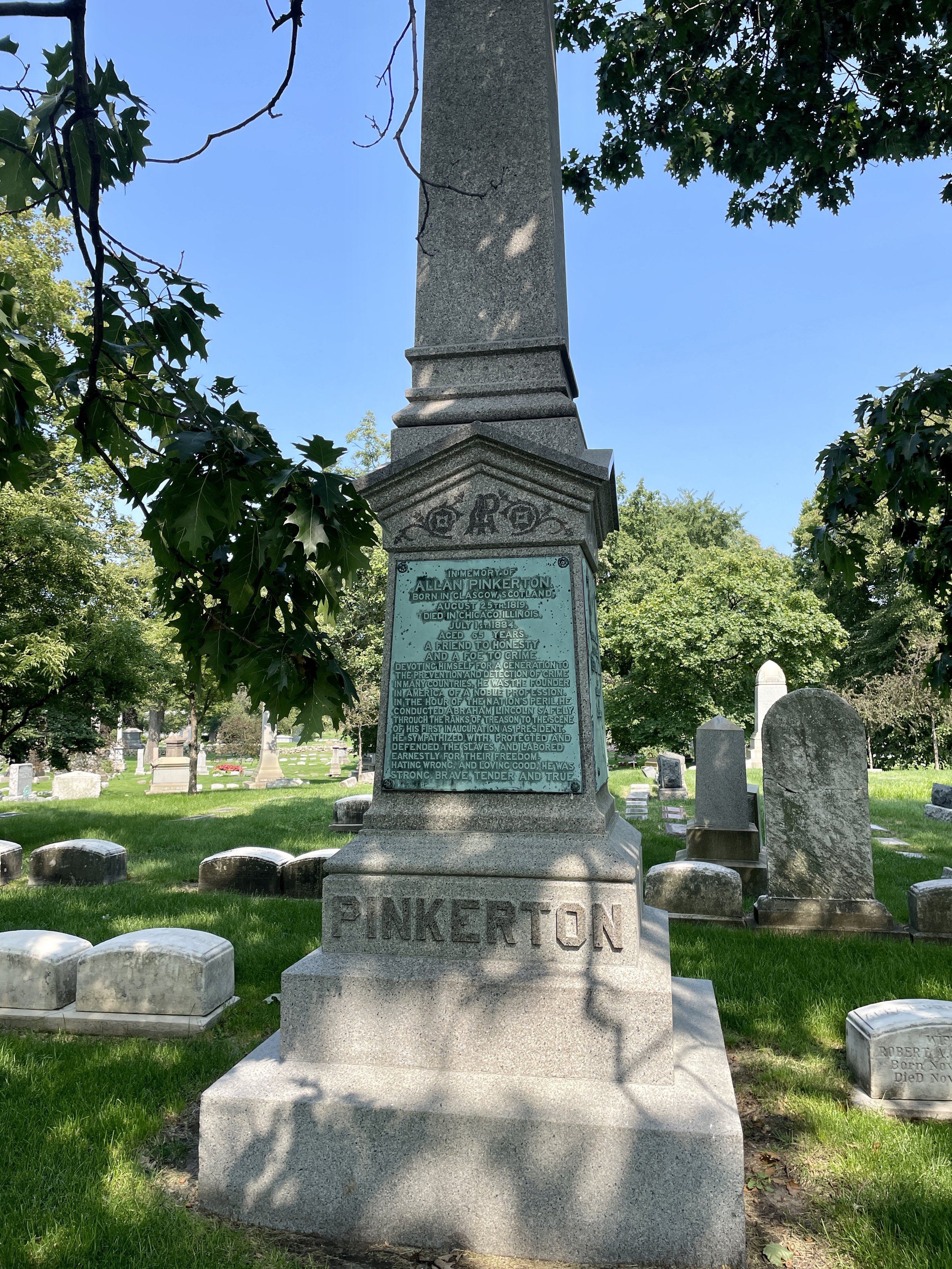
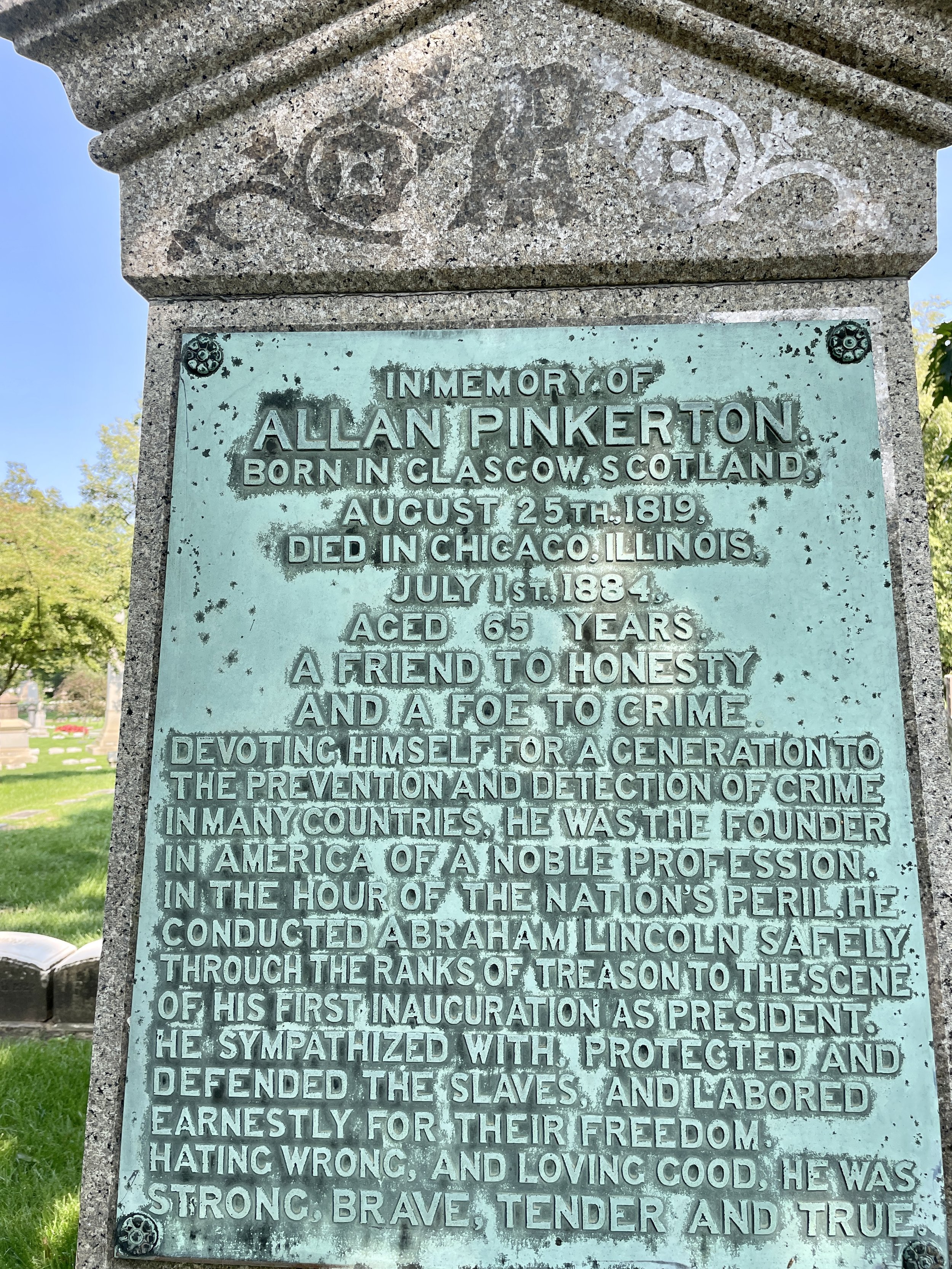
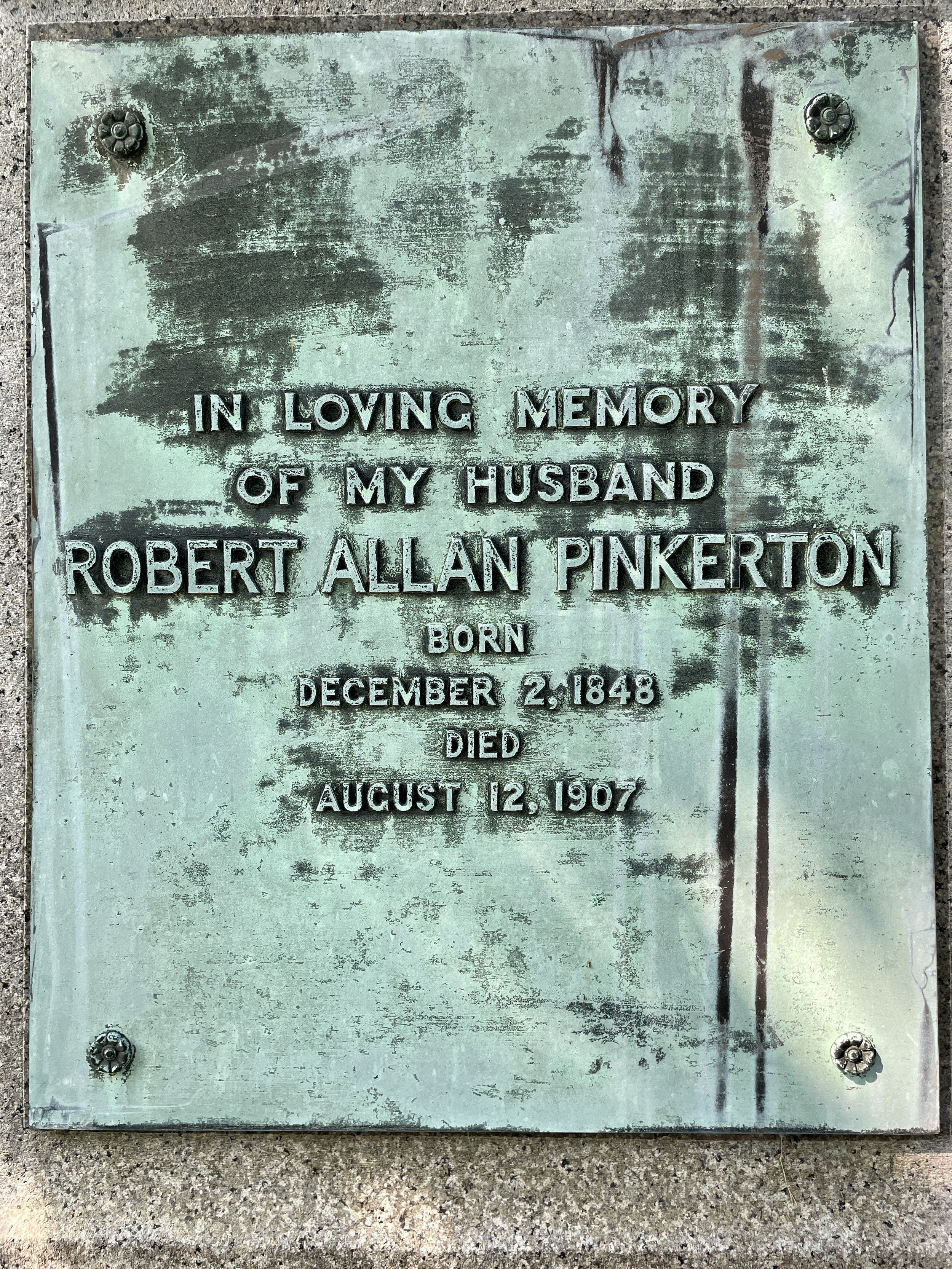
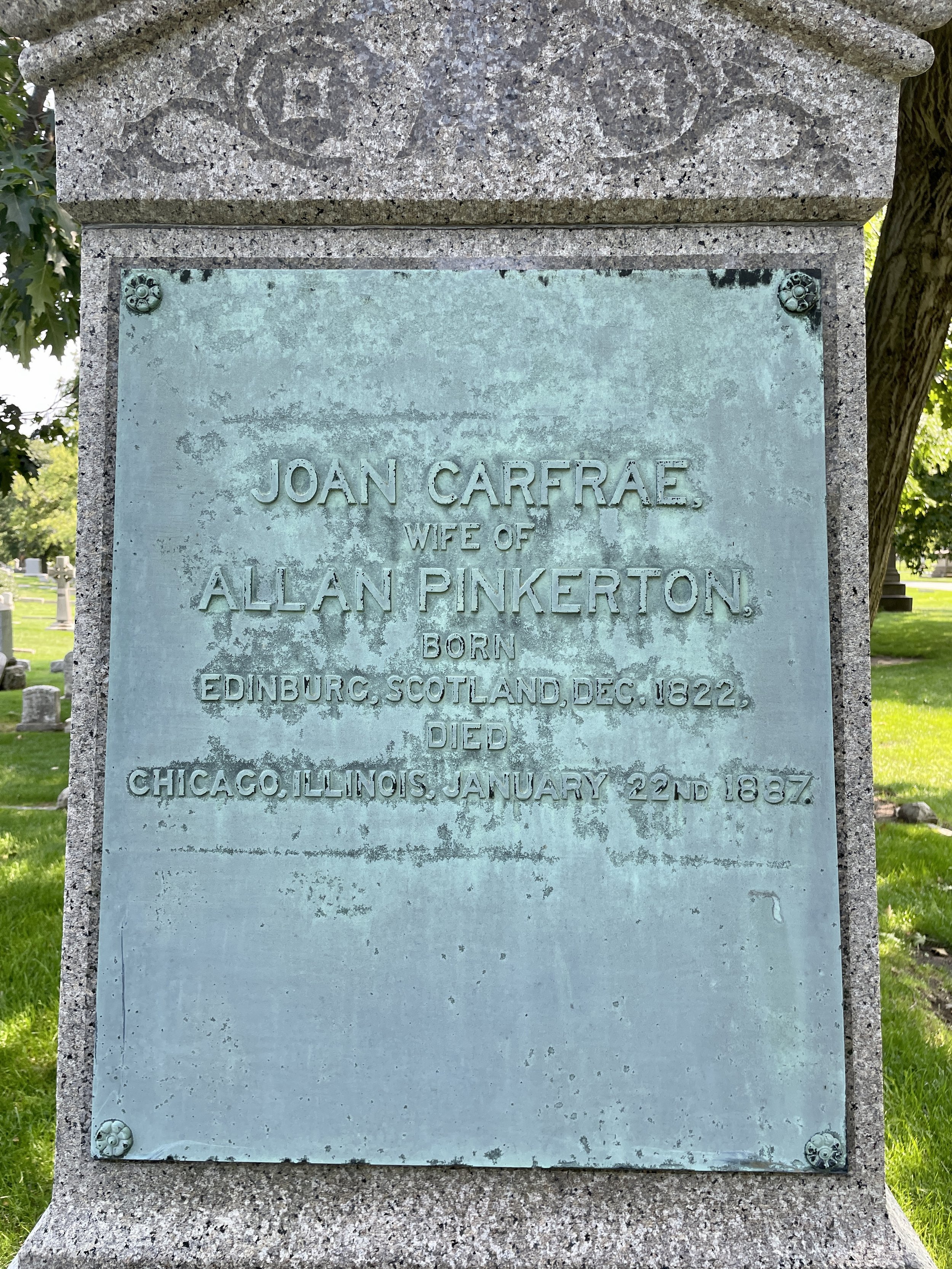
One gravesite Starrett would have appreciated is not far from his own, the imposing pillar marking the final resting place of Allan Pinkerton, of Private Eye fame. The site not only had Pinkerton’s grave, but that of his wife, Joan.
Not far from here is the Pinkerton company site, with its graves for several of the company’s earliest private detectives.
Pinkerton’s detective agency (which still exists) had one of this country’s most famous slogans. Next to an image of a wide open eye was the phrase: “We Never Sleep.”
You’ll notice as you click through the accompanying images that the slogan is not mentioned in the monument.
George Pullman
Not far away is another imposing structure. Railway car magnate George M. Pullman is buried under a 40-foot Corinthian column.
Somewhere.
There was a rumor for many years that Pullman’s exact grave was hidden so that disgruntled employees could not dig up his remains.
While that is probably not true, it is true that Pullman’s “benevolence” towards his employees was not unlimited and a strike of his workers drew national action to quell the disaffected.
Before we move on
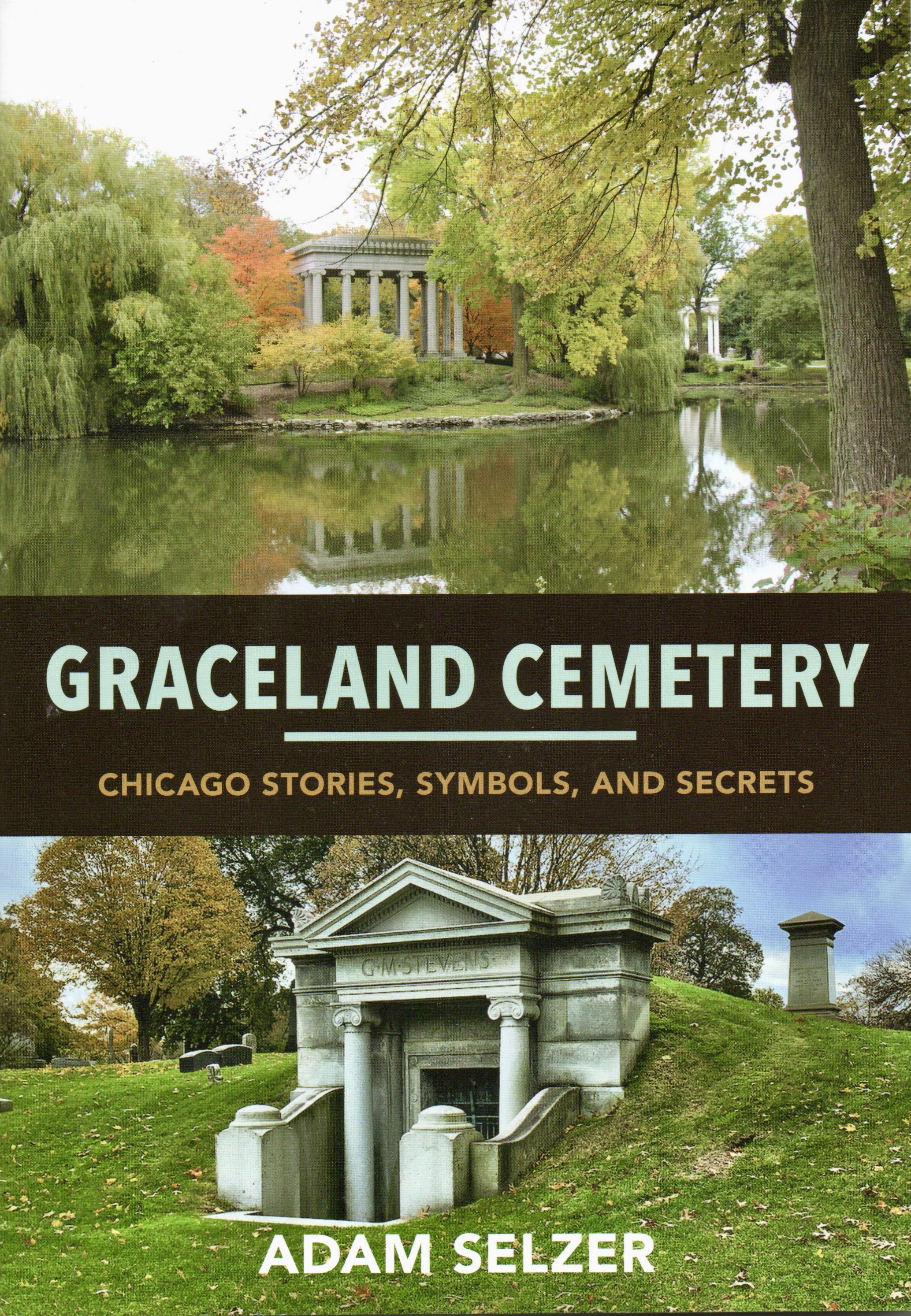
This is a good place to note that in addition to Don Izban’s guide, I am also drawing information from the highly detailed and very informative recent book by Adam Selzer.
Graceland Cemetery: Chicago Stories, Symbols and Secrets was published in 2022 by 3 Fields Books, an imprint of the University of Illinois. The volume makes for excellent rainy day reading. It’s profusely illustrated and written with a real sense of admiration for this beautiful, phantasmagorically odd and unexpectedly wonderful place.
Click through these images and you can see what Selzer had to say about Starrett and his remarkable headstone.
And for the record, I left Selzer’s book at home too.
Martin Ryerson
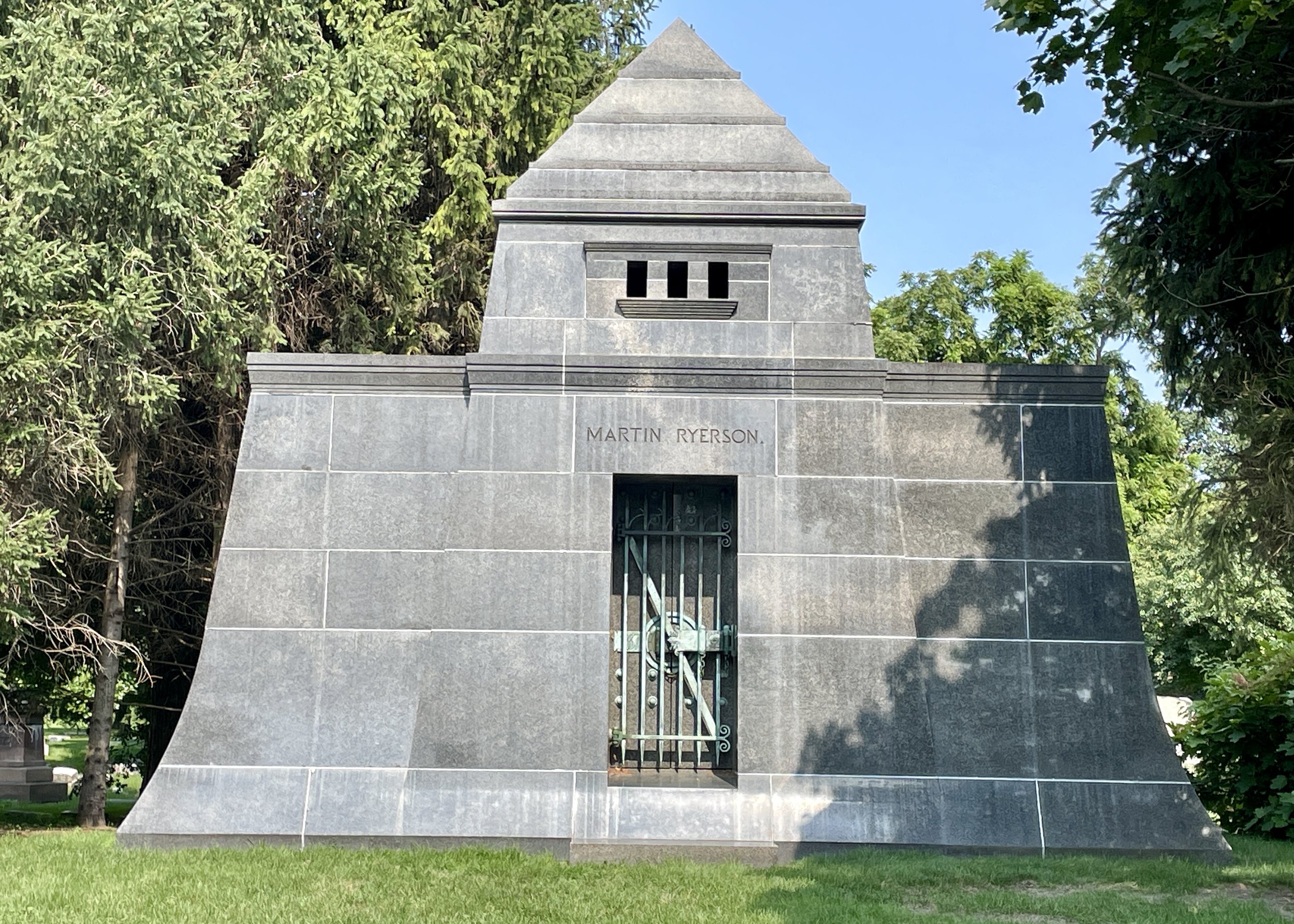
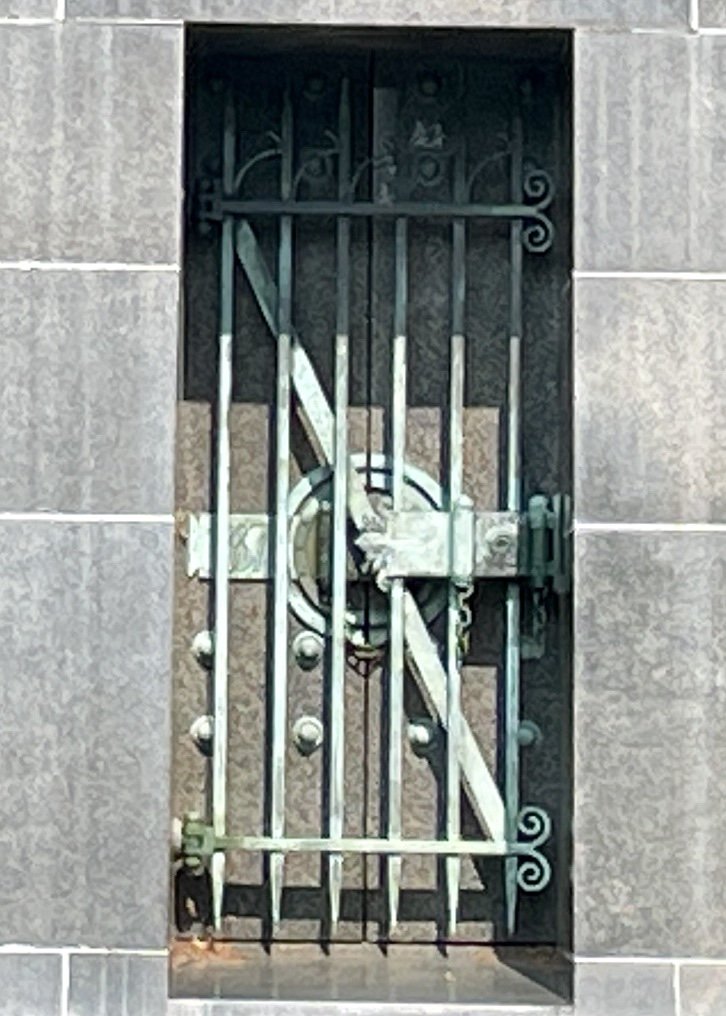
The nearby Ryerson Tomb was built in a vaguely Egyptian pyramid style. It struck my eye more for the impressive doorway rather than its architecture.
Seltzer says the Ryerson family made their money in the mid-19th century in lumber and real estate. But you would have thought they were locksmiths.
Look at the bars on that door. Makes me wonder if they were worried about angry employees planning retribution like his neighbor Pullman.
Peter Schoenhofen
Peter Schoenhofen’s tomb also has Egyptian pyramid features, including a miniature sphinx. But that’s not all. There’s an angel also keeping guard with a rod in its hand.
It’s hard to see in this photo, but if you look closely, you can see a snake wrapped around the door handle. All together, it’s a curious blend of Egyptian, Christian and, well, weird.
Schoenhofen was a brewer, bless his heart.
Make what you will out of the connection between his profession and this mad mashup of imagery.
Marshall Field
While his department store empire has been swallowed up by other companies, the name Marshall Field is still legendary in Chicagoland and beyond. His grave is equally memorable, with a resting statue contemplating a reflecting pond. The members of the immediate Field family are interred under simple markers.
I have no idea if they purchased the items for the grave from the department store.
Ernie Banks
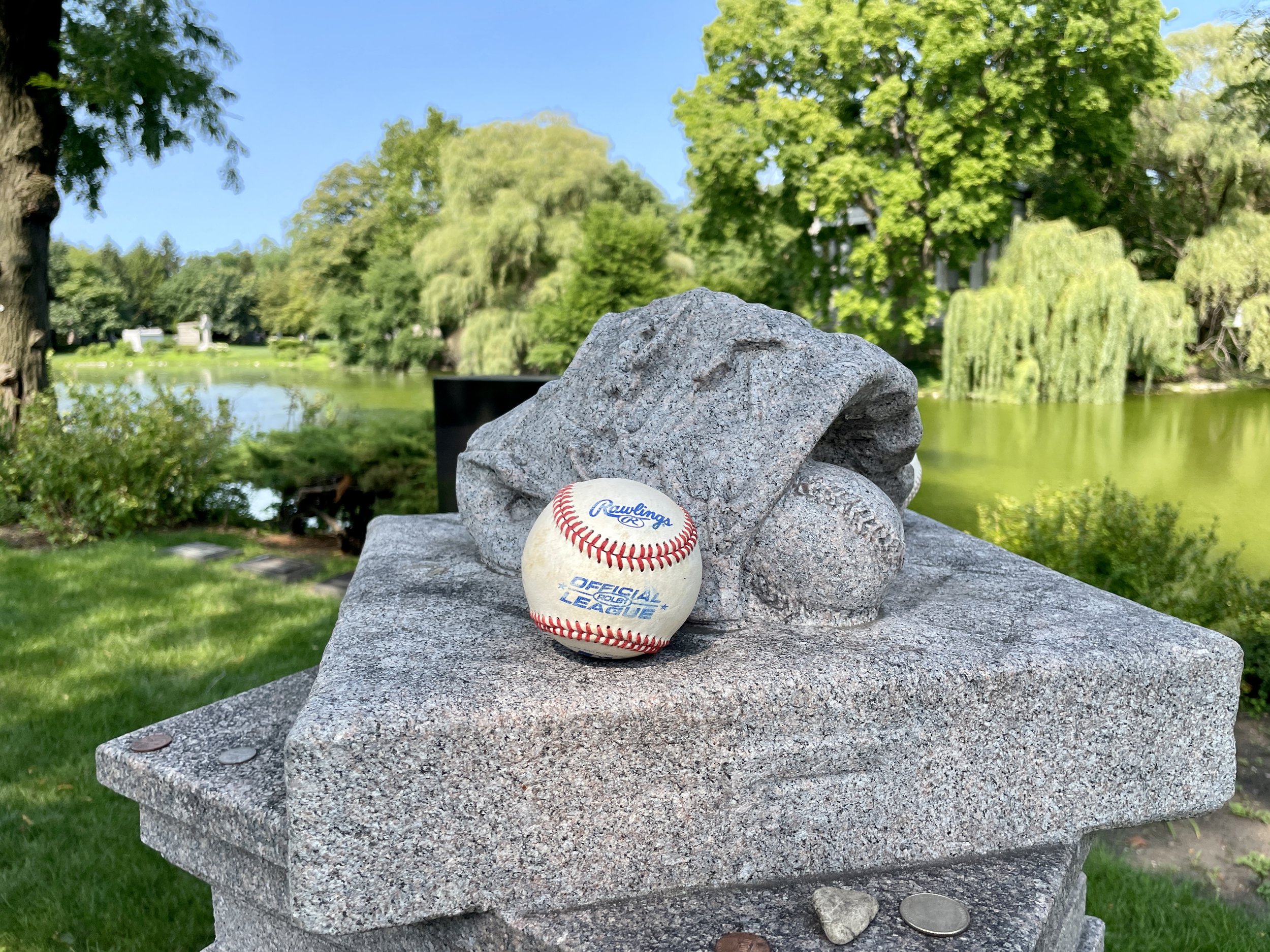
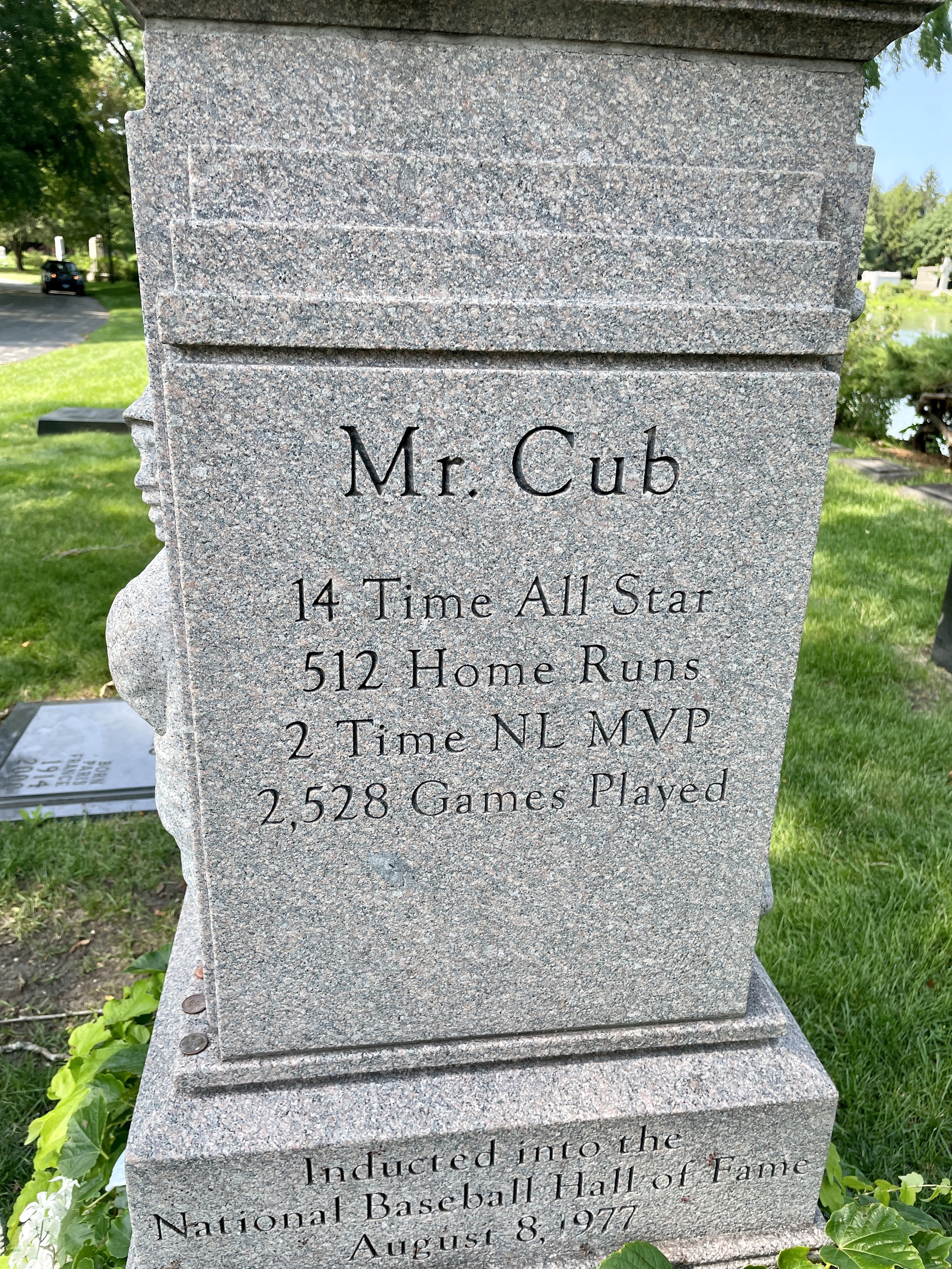
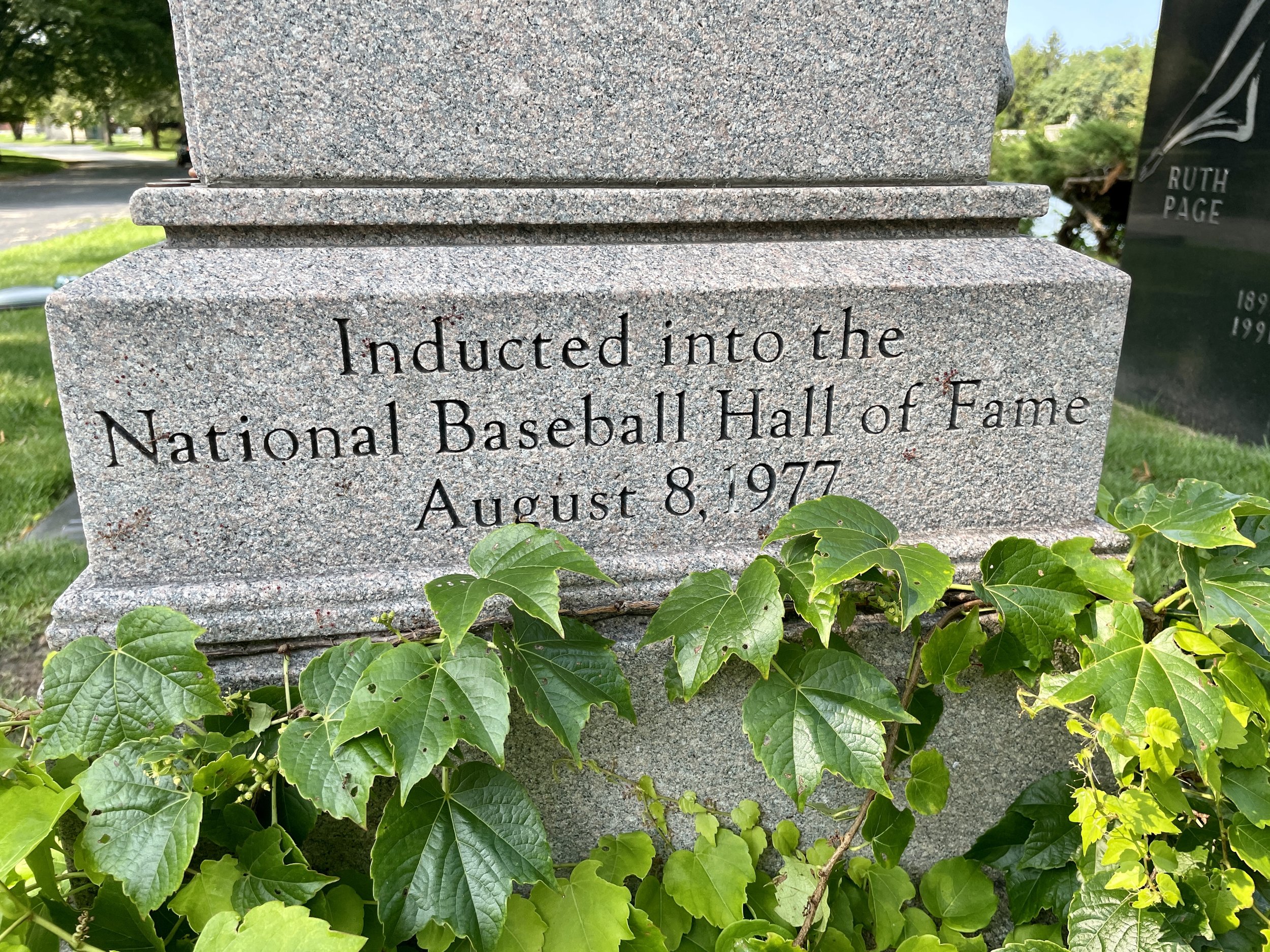
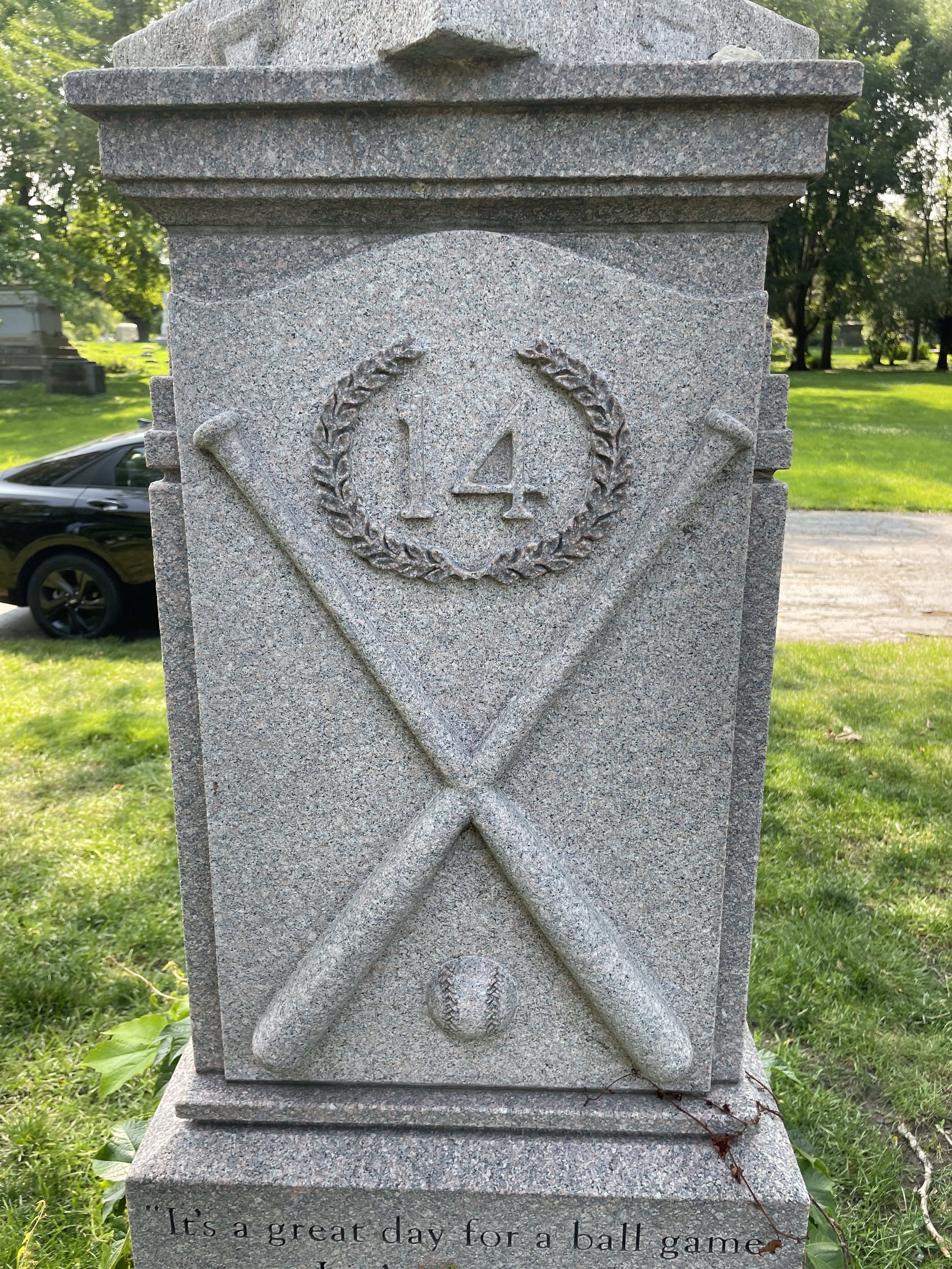
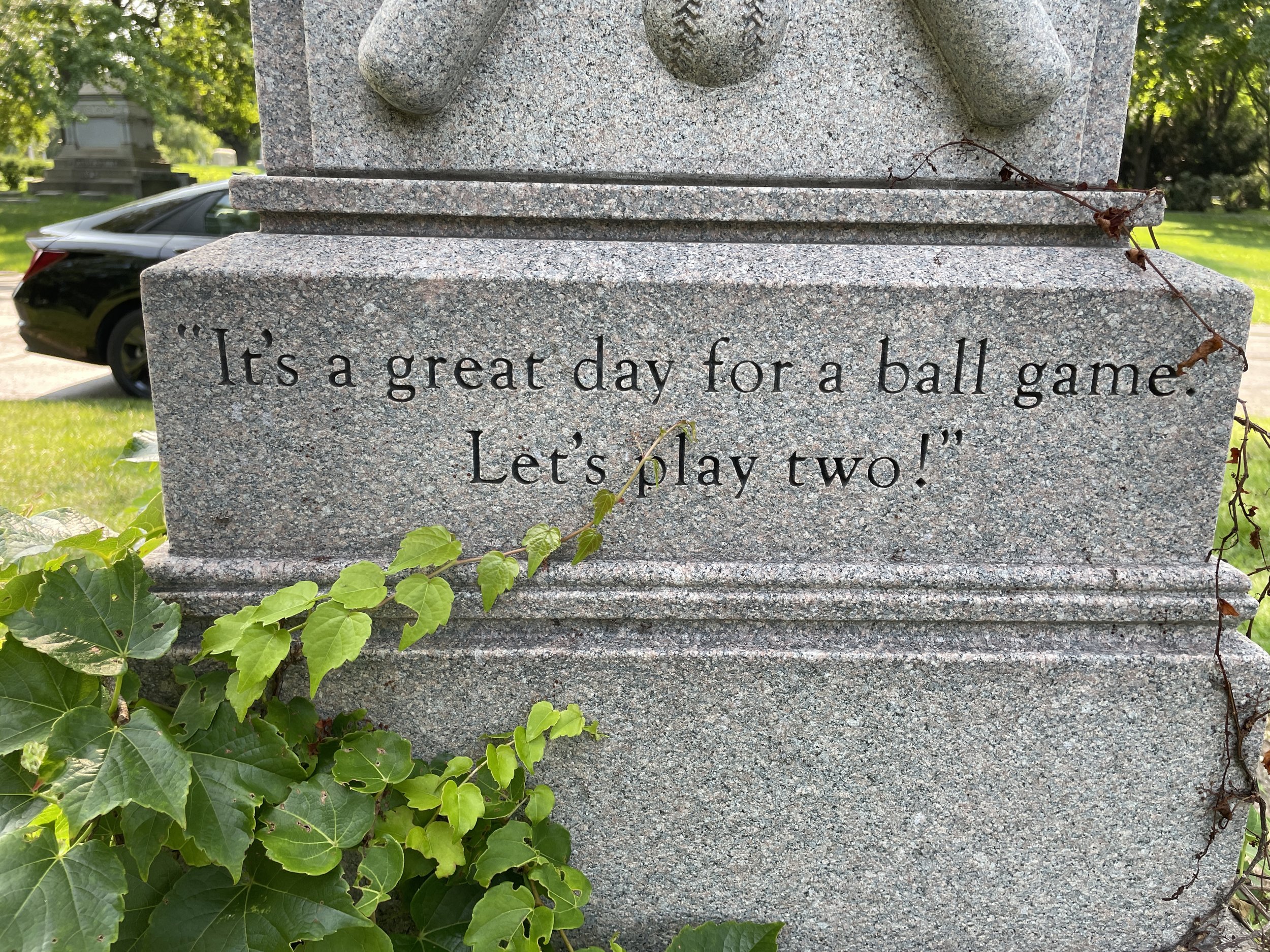
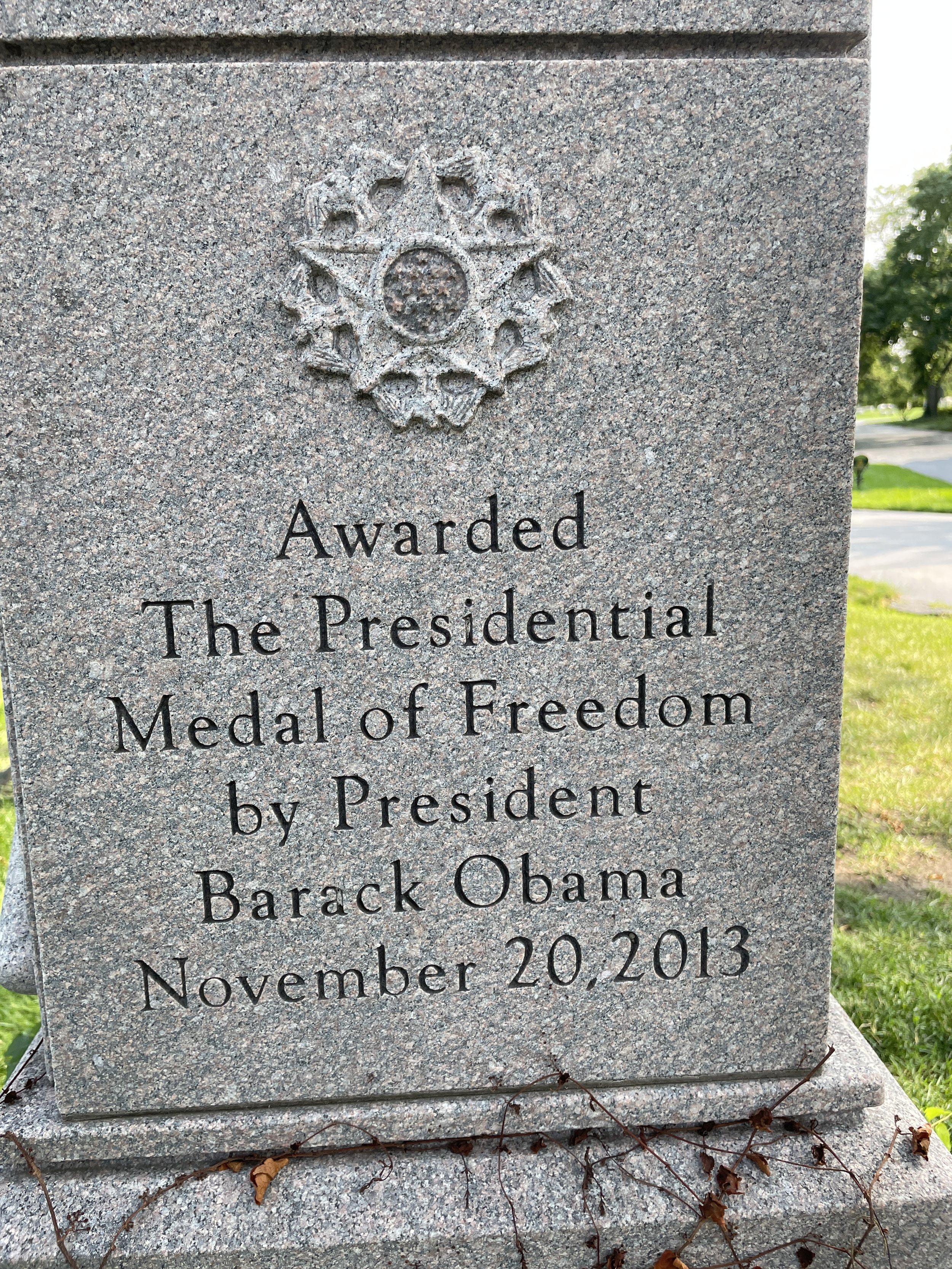
If the list of imposing monuments above left me contemplative and a little melancholy, the memorial to Ernie Banks made me smile. I’m old enough to remember seeing Banks in a Chicago Cubs uniform on television.
The Cubs were, if you’ll forgive the technical baseball term, lousy in the 1950s when Banks was hired. He quickly became a fan favorite and was National League MVP in 1958 and 1959.
The glove and ball carved into the top the Banks monument humanized this little plot of ground. The baseball left by a fan next to the carving was a sign of a fan’s admiration and respect.
Take a look at the many sides of the monument. My favorite is the place where one of Banks’ most memorable quotes is etched:
“It’s a great day for a ball game. Let’s play two!”
Dr. Christopher D. Manuel
Among these monuments, there is also one that stood out because of it’s serene beauty. Dr. Christopher D. Manuel was an anesthesiologist at Rush University Medical Center who died suddenly while biking along Lake Michigan. He was 40.
His headstone is dominated by a lifesize statue of young flutist, perhaps a modern rendition of Pan. On the side of the stone are carved lyrics from a 1934 Sam Lewis song, “For All We Know.” (Here’s the Nat King Cole cover version.)
“For all we know. This may only be a dream. We come and we go. Like the ripples of a stream. For all we know. Tomorrow may never come. For all we know.”
Final thoughts
Eternal Silence is so well known that he has his own Wikipedia entry.
Vincent Starrett was born into the late Victorian era.
For the Victorians, cemeteries were not only a resting place for family remains. They were park-like, dotted with trees, ponds and gardens. Victorians visited their families, took picnic baskets and relaxed under the leaves while children would pay in the pond. These cemeteries were for the dead, but were also living places, filled with monuments designed to express both loss and the hope for a future when loved ones would be reunited.
Oh, and they could be really creepy too.
Starrett always enjoyed a touch of the macabré.
Perhaps he enjoys being just a short walk from this fellow. His formal name is Eternal Silence. I think he’s a refugee from the Addams Family.
And with those creepy thoughts, let’s get back in the car and head to a friendly local place for deep dish and beer. I’ll buy.



